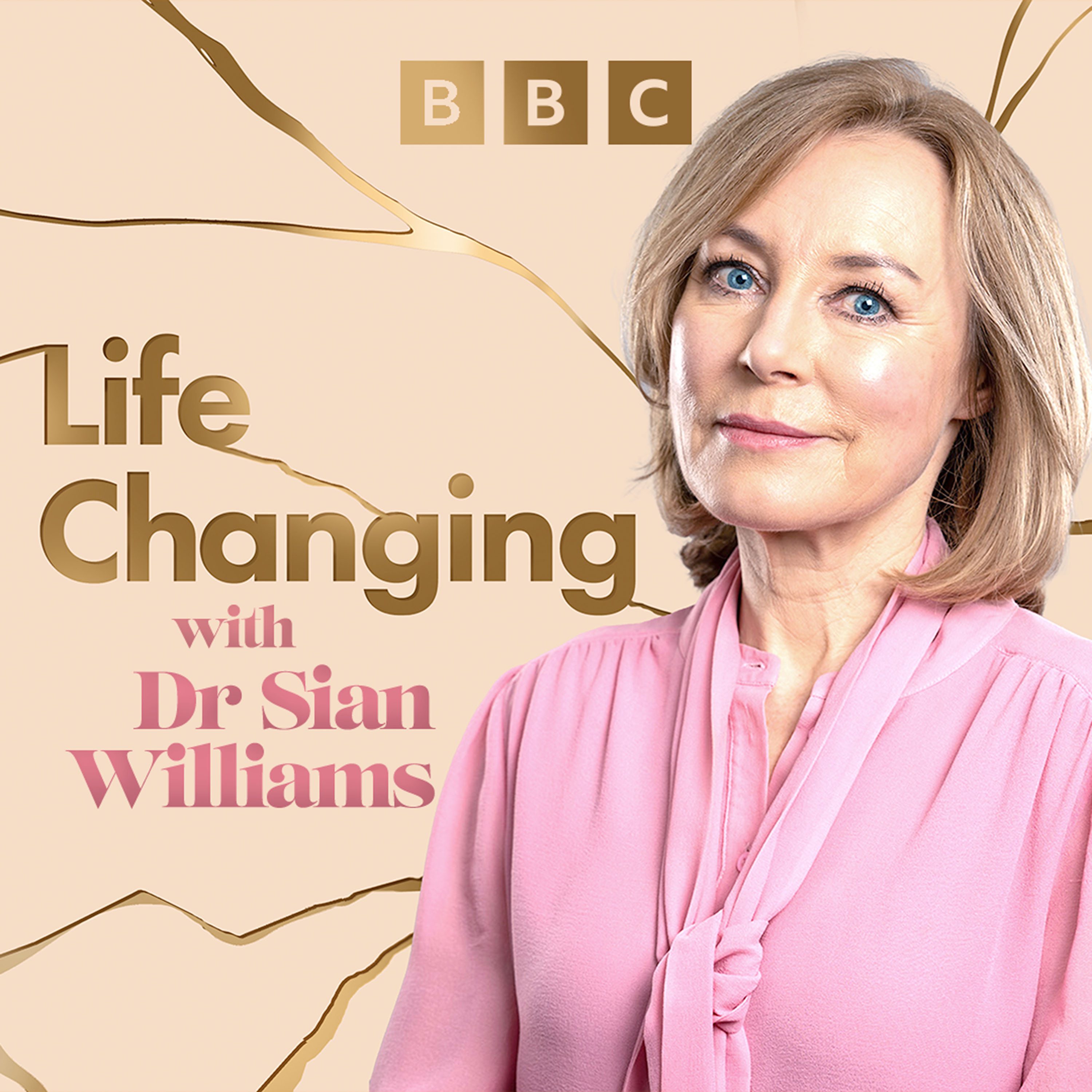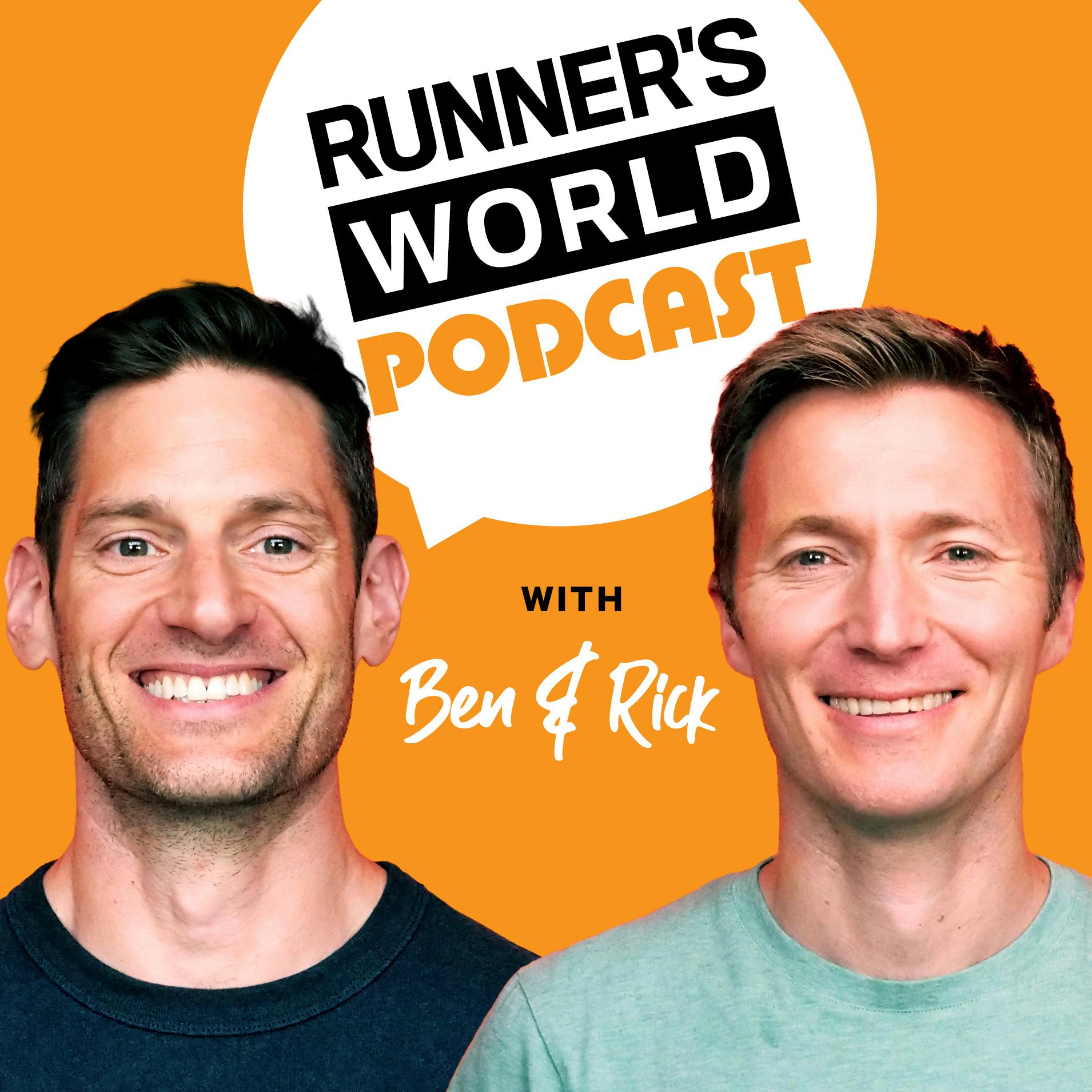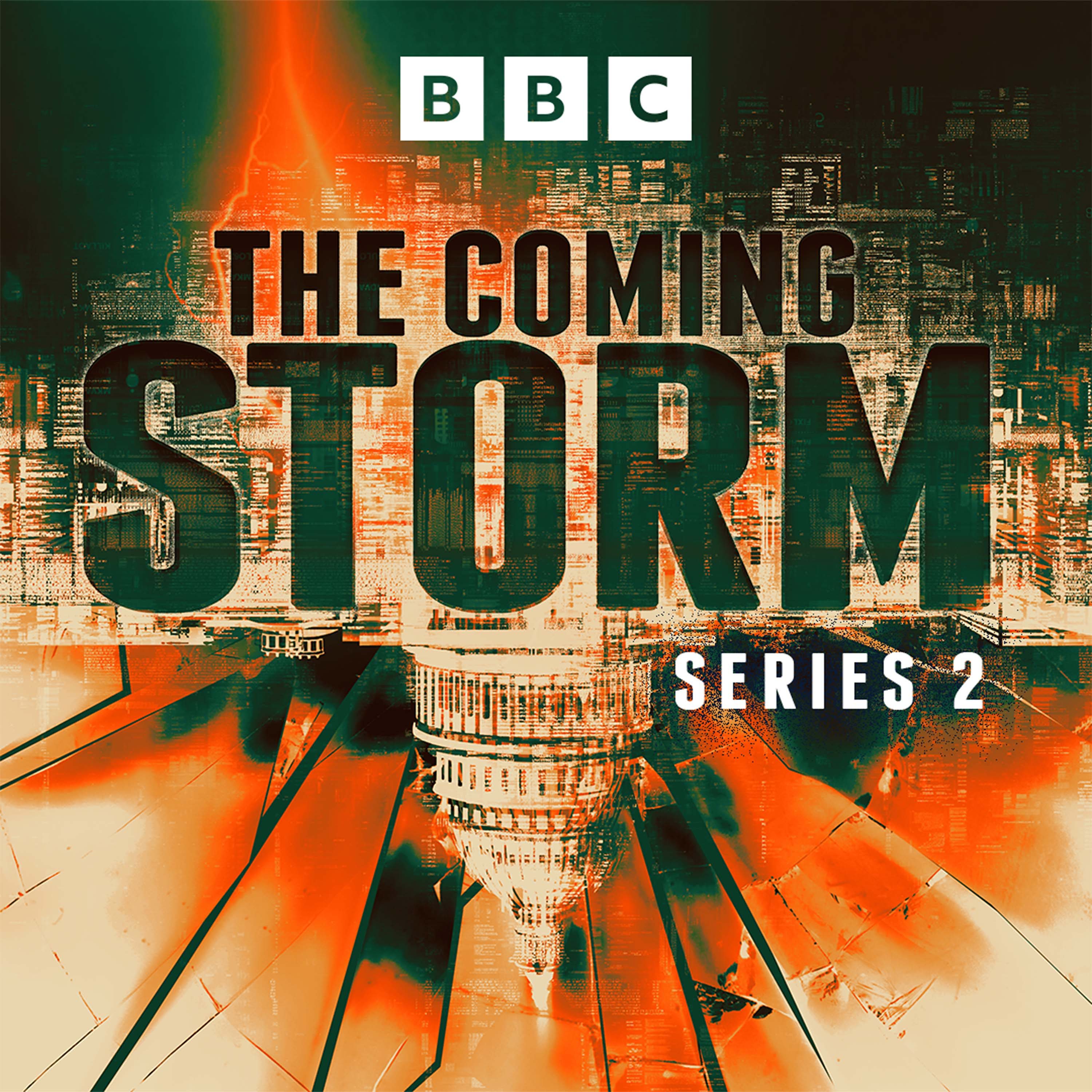
Brian's Run Pod
Welcome to Brian's Run Pod, the podcast where we lace up our running shoes and explore the exhilarating world of running. Whether you're a seasoned marathoner, a casual jogger, or just thinking about taking your first stride, this podcast is your ultimate companion on your running journey.
Join us as we dive deep into the sport of running, covering everything from training tips and race strategies to personal stories and inspiring interviews with runners from all walks of life. Whether you're looking to improve your race times, stay motivated, or simply enjoy the therapeutic rhythm of running, Brian's Run Pod has something for every runner.
Brian's Run Pod
The Art of the Perfect Sports Bra with Expert Insights
Unlock the mysteries of optimal athletic performance and breast health with Dr. Nichola Renwick from Portsmouth University's breast biomechanics research team. This episode promises a journey through the evolution of women's running bras, from their early designs to the cutting-edge technology that now shapes these vital pieces of sportswear. Prepare to gain expert insights on how the right support can revolutionize a female runner's experience, with practical advice on choosing the perfect sports bra. Dr. Renwick's collaboration with esteemed organizations like the English Institute of Sport and the British Olympic Association underscores the caliber of knowledge shared within.
Dive into a compelling discussion about the common misconceptions that plague sports bra selection and the surprising findings of how perceived support often mismatches actual effectiveness. Discover the groundbreaking advancements in bra technology, like electronic properties adapting to movement, promising personalized comfort and support. We also reveal the crucial five-step fit guidelines from Australian research, ensuring you're equipped with the knowledge for peak performance. With our focus on the latest breast movement biomechanics research and its influence on the sportswear market, this episode is a must-listen for anyone invested in female athletic apparel and the health benefits that come with it. Join us and Dr. Renwick for an enlightening look at the sports bras of today and the innovations that await. dWTOcmG7B23sybpXQEkS
University of Portsmouth Breast Health
BBC Sports Bra Investigation
Lucy Tomlinson Christmas Offer for Welcome Pilates
Merili Freear running author promotes her new book
Fitz Koehler's new Book "You Supercharged".
Lisa Jackson - "Still Running After All These Tears".
Brian's Run Pod has become interactive with the audience. If you look at the top of the Episode description tap on "Send us a Text Message". You can tell me what you think of the episode or alternatively what you would like covered. If your lucky I might even read them out on the podcast.
Instagram
Before we start this podcast, I just wanted to say thank you to Dr Katie Kennedy for making me aware of the research at Portsmouth University. Now, katie has been on the show before and if you go back to episode 44, she talks about the emotional ties in running. Anyhow, after a bit of hesitation as I thought it would be a bit odd me interviewing one of the researchers about sports bras I thought why not? Katie told me that it was a subject that comes up a lot when she's talking to other women about getting into running. I'm most grateful that Professor Joanna Wakefield-Skurr, the head of the research, agreed that I could interview one of her team. Now, as is normal, I have split the podcast into two. The first part, we discuss the nuances of the research and some of the technology behind it. In the second part, dr Nicola Rimwick discusses the five key areas that women should think about before purchasing a sports bra. So, without further ado, let's get into the podcast. So you're thinking about running but not sure how to take the first step. My name is Brian Patterson and I'm here to help.
Speaker 1:Welcome to Brian's Rompod. And it's me, brian Patterson. I'm your host, and today I'm really excited to have a real special guest onto the show. Today I'm going to be talking to Dr Nic Nicola Renwick, who is part of a team doing research into breast health at Portsmouth University. They're using their expertise in breast biomechanics to improve scientific knowledge of breast health. Now you might be asking us too, why are we covering this on a running podcast? Well, it just so happens that part of their research is into sports bras and they're doing this in collaboration with the English Institute of Sport and British Olympic Association. So, obviously within an Olympic year very important and in order to deliver the breast and bra education, bra fittings for some of Britain's top female athletes, no doubt the research will then find its way to manufacturers of sports bras. So if you'd like to give a warm Brian's Rumpod, welcome to Nicola. Welcome.
Speaker 2:How are you today? How are you?
Speaker 1:today.
Speaker 2:Good, yeah, I'm good, thank you. Thank you for having me on the podcast.
Speaker 1:Great. I thought I'd sort of go into sort of the beginning in terms of the history of the sports bra and I was listening to a sort of BBC podcast earlier on today where they interviewed Lisa Lundahl and I do share something in common with her because she's epileptic and so not that it's is an issue anymore, but maybe that's something that for another podcast, whatever, but I know it was a, it was an. It was a problem that she had because she liked to run and she found it quite uncomfortable at the time and it was interesting that they came across the solution quite by accident.
Speaker 1:In terms of that, I think she was in her partner sort of for a joke, put a jockstrap over his head and then suddenly they thought maybe that was the Eureka movement movement so and they kind of from there it kind of developed that was. That was quite interesting so. But what I was quite interested to find out is that how come University of Portsmouth decided to, you know, go into this type of research?
Speaker 2:Yeah. So I think that all goes down to kind of the head of our research group, professor Joanna Wakefield-Scar. So she's talked about it herself in the past that she's experienced discomfort and pain when she's exercising and running and that it gets in the way of preventing you from exercising and moving in the way that you want to. And actually a lot of women experience this. But then when you go to, if you report to your GP, your doctor, about it, there's not really a lot of options for it in terms of exercise-induced breast pain. So that kind of inspired her, as a sports scientist and biomechanist to really kind of delve into it.
Speaker 2:I think historically, and still right now within sports science, women aren't typically studied as much as men and their bodies, so it's kind of it yeah, it's, it was there there was not much of a starting point, so she kind of had this whole kind of pull to just go into and kind of start from scratch and she's built up this amazing research group that we have now, where we cover all aspects of breast health, but including and the area that I'm really interested in, which is breast biomechanics, which I specialize in.
Speaker 1:From from those early days as a kind of to just mention that about the I think it was called the jock bra, you know sort of quite a crude name at that time had to to now when you started the research had kind of had it moved on much or was it kind of quite stagnant over the last 20 years in terms of sort of you know bra biomechanics and and breast health I would say it was developing, but whether that was evidence-based I would say maybe not as much as it is now.
Speaker 2:Currently the sports bra market is accelerating at a massive rate in the sports apparel world and again, I think it's more and more. Women are kind of almost like not almost like breaking the taboo and they're educated themselves and you know, breast pain isn't necessarily normal when I'm running and when I'm exercising and that's kind of created this market and we're lucky enough to kind of work alongside some of these companies to help provide evidence-based sports bras for their customers.
Speaker 1:And do you think, because technology has moved on quite a bit, you know, in terms of? I mean, I've seen you know on your website that you're able to provide a much more definitive research, for in producing you know the, the, the right kind of. You know sports, basketball, for one of a better word. So you know it's kind of your, your, your much, you can be much more detailed with research yeah, and I think we still.
Speaker 2:it's still every time we kind of do a bit of research, it almost opens up another avenue of questions because it's such an untapped area still to this day. So we're continuing to develop that, and whether that's in you know, technologies in order to be able to measure things that we're interested in and doing different types of testing, or whether that's just in the type of analysis we do of the data that we collect, it's still very much kind of and I wouldn't say, in its early days, but it's definitely not fully established and we are continuing to push that and advance that as much as we can within our research I know we talked and I know you're something that you kind of wanted to and you kind of highlighted is that how that a poor fitting bra can make have an impact on performance?
Speaker 1:Can you sort of talk about that?
Speaker 2:Yeah, so I think so. So when we think of sports bras, there's different ones on the market and a lot of women will complain about it being uncomfortable, which is often a sign of it not being the right fit. And a lot of breast pain is related to kind of excess movement of the breast during physical activity. So if you're wearing a pearly pretty bra or a bra that's not the right level of support, that then does impact your performance. Right level of support that then does impact your performance. So we've seen that exercise in general in itself will feel harder and in terms of running, we see that your ground reaction forces, so how hard you hit the ground, that actually increases. So if you're wearing a low support bra for the activity that you're doing, that can then, you know, lead to impacting on your feet and your knees as you're doing it and causing more bodily problems, rather not just pain in your breast but potentially other body parts as well it's like a chain reaction yeah, yeah, it is one of those things.
Speaker 2:It's like everything in the body is connected and it's exactly the same with breasts. We also see an increase in your upper body muscle activity and when running we've actually seen in studies a restricted upper body running profile. So that's kind of what we think is from very much from people trying to in order to stop the movement of their breasts while they're running into control.
Speaker 2:They're almost like stiffening their muscles and stiffening their upper body in order to kind of stop that excessive breast motion that's causing them pain. And then, on top of that as well, there's a whole list of whole list of things that we've seen with it. We've seen that breathing frequency can decrease, so you breathe less regularly when you're wearing a low support bra, and then your stride length is also decreased, so you're actually again it's that trying to prevent that excessive breast movement, so you're taking shorter steps almost to compensate for that movement and also mentally, that you kind of discouraged and may not want to participate.
Speaker 1:Yeah it is.
Speaker 2:Yeah, it is that barrier it's, and we have we have seen from surveys that we've done that women report breasts as a barrier to physical activity and that excessive breast movement is down to it. And it's almost like you say, you're prevented from doing it just because you think, oh, I'm going to go into it and I'm going to be in pain, I'm not going to be able to do it properly, and yeah, it is a shame that that's the case. And I'd say as well that this affects all women of every level of activity, you know, from recreational youth runners, from people just getting into exercise for the first time, and even elite athletes. Like you said, we've worked with professional athletes, we've worked with Team GB athletes and we've worked with the women's football association, with the lionesses, and yeah, I just I always like to put it out there that if you are suffering from breast pain when you're exercising, you're not alone.
Speaker 1:It is happening to a huge amount of people is there a kind of like a because I was just thought crossed my mind is is there like? I mean, obviously if you're walking, let's say walking on a treadmill, it's you know, because if there is a correlation with speed, I mean, is that something you picked up in research that if you go above a certain speed then the movement you know is going to be greater, sort of thing.
Speaker 2:Yeah, so we do see that in terms of when we see breast movement, it increases as speed increases with running and it does get to a point where it kind of plateaus so around about between 10 and 12 kilometers an hour it does kind of plateau and that basically is like the breast skin, which is the main supporting structure of the breast, almost reaches its limit, so it's kind of moving it and it can't actually move any further. So from that point, in terms of the amount of breast displacement, we see it does plateau around about there.
Speaker 2:And then you also have to consider potentially other activities as well physical activities I know this is a running podcast, but if anyone no, no your listeners do other activities as well. It might be that you need a different bra for your different kinds of activities that you're doing. Yeah, so even you know something like golf or tennis, your torso is moving in a very different way, which is going to move your breasts in a very different way to when you're running, so you might need a different kind of bra and a different kind of support for that type of movement.
Speaker 1:So when you were starting off doing the research, were there sort of certain things? You know that you were kind of right. You know there's breast pain, there's movement and there are certain boxes that you wanted to tick and you wanted to solve or you wanted to research into. Is that you how you kind of approached it?
Speaker 2:yeah, I think, I think I think the first kind of step was kind of understanding how the breast moves and what is that movement? And then looking to see, okay, so we put a bra on, how does that then change how the breast is moving? And then how do we then from that go to understanding so what is a good change? So what is that change? And that's in terms of reducing the amount of breast displacement. And we have this measure which is called breast movement reduction, which we use in our commercial testing unit, which measures the level of support that a bra can provide. So we had that and that looks using breast displacement. And then we're also interested as well in terms of the. When we do our testing, we get the participants to fill out a survey, a questionnaire for us afterwards, after they've completed it, to let us know how they felt in the bra in terms of pain and comfort, support. So we're interested in that and then linking that back to maybe design features that we might have within the bra and again I'm just looking.
Speaker 1:I mean, I it was really quite interesting how it looks like some kind of motion graphics, like you're doing it for a video game, but I suppose it was a very similar type of way or how you did it in terms of doing the research, because you had someone on a treadmill and you have these kind of you know dots which were on, you know, all around their body. That must have been quite interesting in doing that is, how did that take?
Speaker 2:yeah, so that we use is a motion capture software and hardware, and it is the exact same type of equipment that they use in Hollywood to make your kind of big blockbuster films with all your CGI effects. It's the same little dots, it's the same camera.
Speaker 1:Or video games, for instance. Yeah, they are.
Speaker 2:It's the exact same kit. We just use it to analyze how the body moves and this is kind of really common in biomechanics. Yeah, we have the sensors and we place them on the areas of the body that we're interested in looking at and then we record that, and then we have a software, data, software platform that we kind of put this through and it helps us analyze the data in order to output, yeah, body movements so we can look at all different parts of the body.
Speaker 1:Looking at that, and how does, how does that help you with with the research? So obviously you've you've got all this data and about the movements and it's going to obviously it's going to be varied from individual to individual, isn't it? So how, how do you kind of help, how does it help you in terms of doing the research?
Speaker 2:yeah, so it allows us to make sure that our, our research is all kind of from people and from their experience, so it's not kind of predicted, it's all actual data, so it's all how it's actually moving and, like you said, everybody is different. So we, we, you know, we'll take a large group of people and do it in order to kind of get the average of a group, but then also you kind of get some people who are different and that is really interesting to delve into them, to see what's going on with them. That's different. So it is really great and it allows us to just get a really good image of, especially from going from, you know, different bras and different levels of support. Yeah, you know, see straight away when you get your graph output, you can see straight away what that bra is doing to change the movement of the breast and do the?
Speaker 1:is there obviously different sizes? Then there's going to be greater movement. Obviously, if you are of a smaller size, I'm assuming that you're not going to be suffering as much. Is that the case, or do they have? I mean, that is an assumption, but would they have you know they may be other, different issues? Did you know that isn't that is an assumption, but would they have you know they may be other, different issues? Did you find that? Yeah, data yeah.
Speaker 2:So we do typically see women who have larger breasts have kind of more, more breast pain when exercising, but that's not to say when we're with smaller breasts don't experience it, they very much. It can be just a very individual kind of basis and from that as well, it could be down to their sports bras not fitting properly and the type of sports bra that they wear as well. So a woman with smaller breasts would be recommended to wear a different type of sports bra compared to a woman with larger breasts.
Speaker 1:And when you went into this research, did you have some assumptions and then, when you were doing the research, did you feel that you learned something that really that kind of surprised you coming out of it. From the data that you got, I mean, was it I said, oh, I didn't even think about that or I didn't realize that was something you learned from doing. You know all this motion capture.
Speaker 2:Yeah, so, yeah. So I myself did a study last year from our data set and we were looking to see if so I talked about our measure of support that we had the breast movement reduction, which is how we measure how supportive a bra is, from the questionnaire data from the participants supported. They rated the bra that they were wearing and we thought we'd see a nice correlation where you know if it's a high support bra, they will be able to you know, perceive that it is giving them that support and if it's a loading bra, they'll be able to say you know that's not supportive. But actually, when we ran the data and looked at that relationship, we actually saw that women aren't very good at being able to tell how supportive a sports bra is.
Speaker 1:Oh right.
Speaker 2:So that was quite interesting. So that kind of really highlighted to us in terms of it's really important so we have a way to measure how supportive a bra is. But it's really important then for you know the brands and the companies who are selling the product to really market, market it, sorry, so you know if it's a high support bra or if it's a medium support so this is so.
Speaker 1:It's also about educating the individual as well.
Speaker 2:Yeah, yeah, definitely so that you, you they know what bra to go out and buy if they're looking for a high support bra, because they can't just putting it on in the store and they might, they can't necessarily tell right what support that's going to give them.
Speaker 1:So I thought that was quite interesting right, yeah, and do you think, not going sort of for the tangent wherever, but do you think that the companies now, because they offer bras of a particular size and it is the same size, but then no one has same size breasts, so I mean they're not custom built, as it were, so is there, do you think the companies now kind of take are able to take on board a more custom-built sports bra?
Speaker 2:Yeah, I think in terms of that, I think what we're seeing and this kind of came out I'm not saying it's fully influenced by the work that we did we did a research paper a few years ago which looked at the characteristics of a high-support sports bra. So we looked at lots of different design features and ran some statistical analyses on them to determine which of those were most closely associated with being a high support sports bra. And two of the two of the big ones on those were underband adjustability and strap adjustability as well. Right, so I think that is where you're getting to see more sports bras on the market that do have these adjustable elements, so that it is kind of not tailored on a person-by-person basis, but it is. You are allowed to be able to put it on and adjust it to your body as best you can so it can be more.
Speaker 1:You know, because sometimes you get some women who complain that obviously you know that. You know obviously one breast might be bigger than the other and then you know it can be. You know I'm not getting the right product for you know, for my, for myself, but from what you're saying is that companies are becoming to make it more adjustable so you can fit, you know, be more custom made for themselves.
Speaker 2:So is that right? Yeah, I'd say, that is yeah. Yeah, I would say, yeah, we definitely see that a lot more in those two components, so yeah, has the has the material.
Speaker 1:Over the years, in terms of the material to make the sports sports bra, has that got better.
Speaker 2:So yeah, so there's again that's like an area that's really kind of developing and looking at different materials for support support sports bras. Again, from the paper that we did we looked at I think it compares nylon and polyester and I think nylon. Nylon came out on top compared to polyester in terms of a high support sports bra. But there are lots of advances in material science. At the moment there's even I think there's a research, a research paper published out from a group in australia looking at the bionic bra all right, which had materials that had like electrical, electrical materials.
Speaker 2:So they have all these kind of electronic properties in order to sense changes in breast movement.
Speaker 1:Oh right, in real time.
Speaker 2:Yeah, so it can sense how, almost like how the material then needs to respond to what the breast is doing. So these kind of ideas are out there and they're being developed and they're still kind of yeah, it's a really interesting field actually, some material but it's kind of like at a prototype level, I suppose. Yeah, yeah, yeah, yeah, concept levels and yeah, like I said, it's kind of really it's.
Speaker 1:It's a field that is developing quite quickly so moving on to so when you I mean I probably is the. Is your research still ongoing or was? Have you come up with kind of a template or you know a set of thing, guidelines, you know, for women, you know if they are looking to buy a sports bra, or is there something in the guidelines that you can pass on to the manufacturers? I mean, what would you say they are?
Speaker 2:yeah, so we have our there. So these were in terms of bra fit. We have five steps and again this was.
Speaker 2:This was from work done by a group in australia, and these are steps that we use.
Speaker 2:I look at five components of the bra to check fit of the bra, and that's what's really important, for if you've got a sports bra, if you don't have the right fit, then it won't be able to function properly and do its job the way it's meant to. And in terms of kind of, I guess, in terms of my research and the side of, in terms of biomechanics and kind of pushing forward in design, like I said earlier, it's still, you know, I feel we're still scratching the surface with what we understand about breast movement and we do have some standard practice that we have in place that we apply within our commercial testing unit, and so we have a lot of laundry brands and sports apparel brands. They pay us to test their products basically for them, and we have a set package and a set way of doing that. So that's standardized across all the companies and that looks at the breast movement reduction so, which I discussed earlier yeah and yeah, but in terms of the research side of things, yeah, scratching the surface, we're diving deep into.
Podcasts we love
Check out these other fine podcasts recommended by us, not an algorithm.

Life Changing
BBC Radio 4
Tech Life
BBC World Service
Runner's World Podcast
Runner's World UK
Buzzcast
Buzzsprout
Newscast
BBC News
Understand
BBC Radio 4
Cyber Hack
BBC World Service
Ghost Story
Wondery | Pineapple Street StudiosDiz Runs Radio: Running, Life, & Everything In Between
Join Denny Krahe, AKA Diz, as he talks with a variety of runners about running, life, and everything in between.
Uncharted with Hannah Fry
BBC Radio 4
The Global Story
BBC World Service
The Coming Storm
BBC Radio 4
Lives Less Ordinary
BBC World Service
Do Epic Shit Today Podcast
Hannah Mulhern
The Rest Is History
Goalhanger
